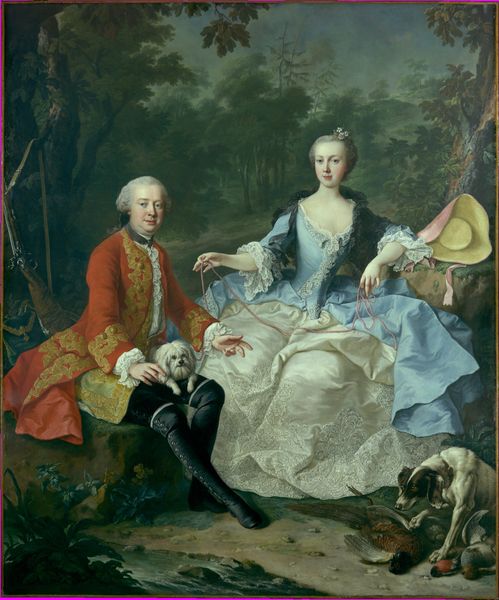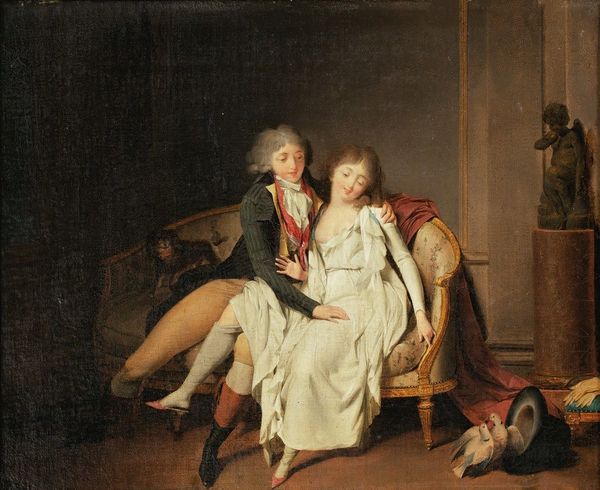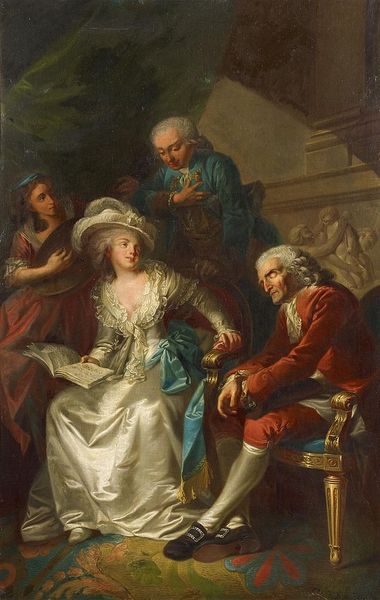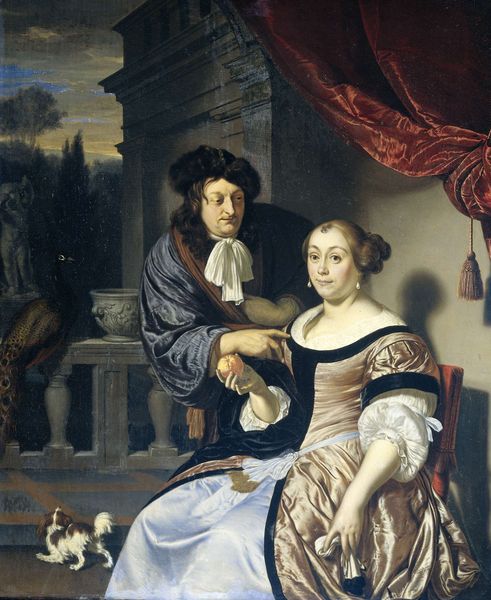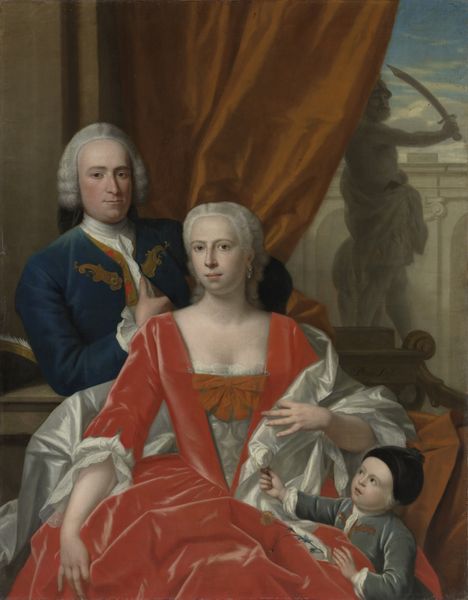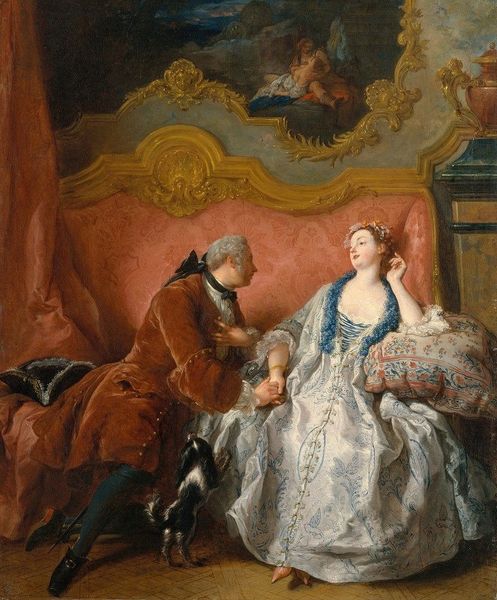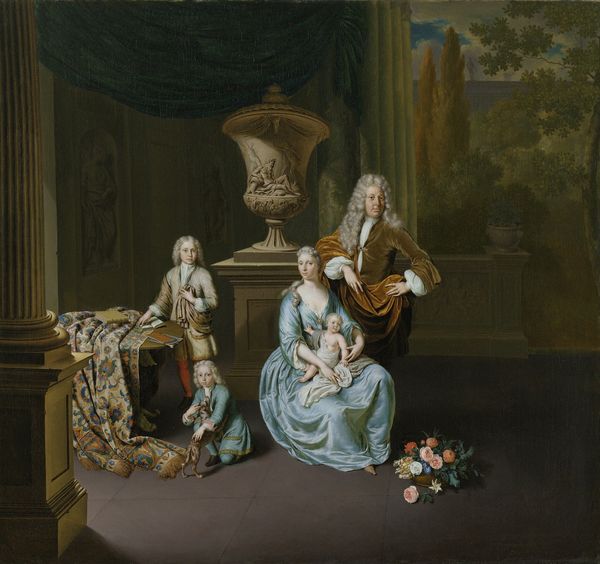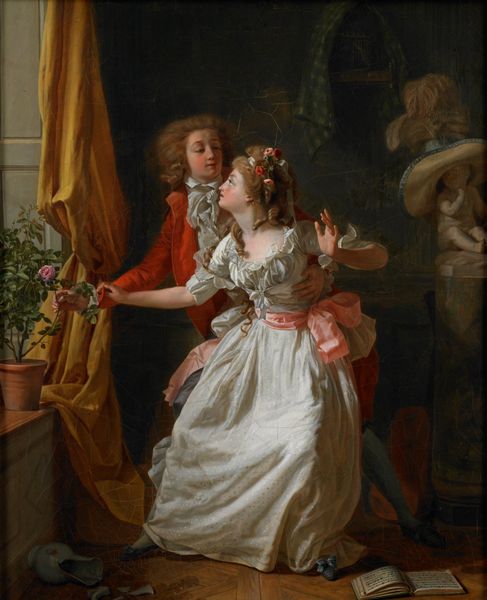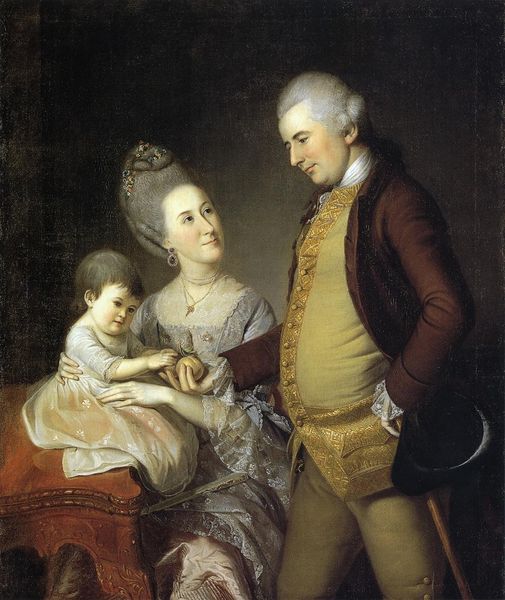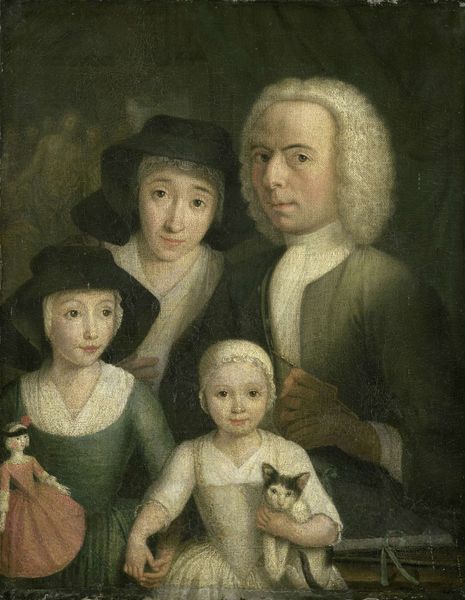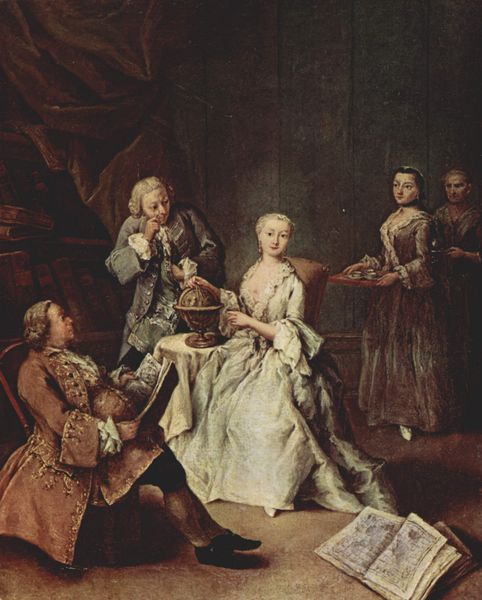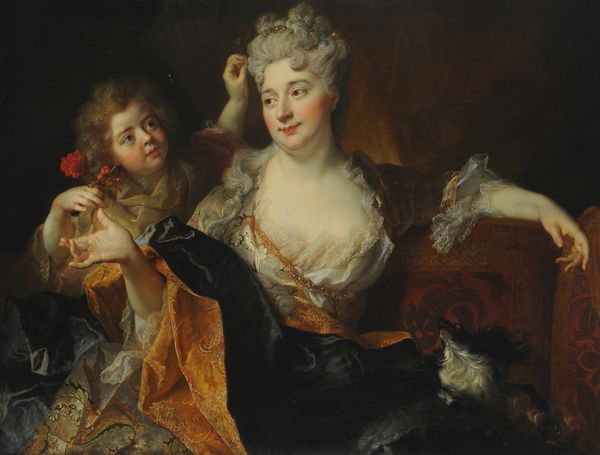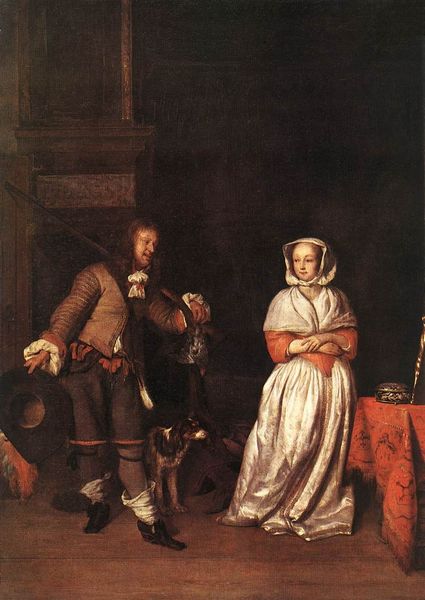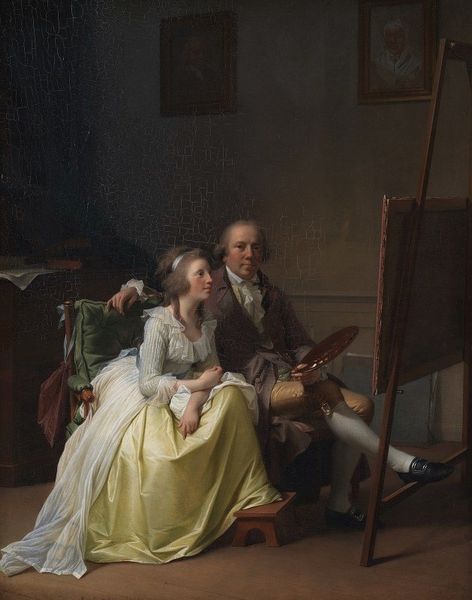
Isaac Parker (1702-1755), his Wife Justina Johanna Ramskrammer (1702-1798) and their Son Willem Alexander (1740-1747) 1742
0:00
0:00
oil-paint
#
portrait
#
character portrait
#
baroque
#
dutch-golden-age
#
oil-paint
#
group-portraits
#
genre-painting
Dimensions: height 51.5 cm, width 43 cm, depth 6 cm
Copyright: Rijks Museum: Open Domain
Editor: This is "Isaac Parker, his Wife Justina Johanna Ramskrammer, and their Son Willem Alexander," painted by Philip van Dijk in 1742 using oil paints. It strikes me as quite formal, yet intimate in its depiction of familial connection. What elements of composition or form do you find particularly interesting here? Curator: Considering its construction, the portrait presents a carefully orchestrated balance. Observe the interplay between the dark, solid masses of the father's attire and the shimmering expanse of the mother's blue gown, creating a visual tension that is resolved in the soft, diffused light of the landscape background. The diagonal created by the table with fruit, juxtaposed with the verticality of the vase and draped curtain, forms an "X" pattern, grounding the figures within a structured space. Do you see how this construction directs your eye? Editor: I do! The X divides the canvas in four parts with the family in the bottom-left, and the garden on the top-right. Why this separation between domesticity and nature? Curator: The juxtaposition you identify prompts inquiry. Are we invited to contrast the cultivated nature of the garden with the carefully constructed identities presented by the figures? The painting style is detailed, but what of it? Editor: I suppose it could signify control versus freedom, or the ideal versus reality... And concerning the detail, it’s interesting that Van Dijk includes fruits and fabric as a display of the family's fortune, but does not prioritize on showing any genuine emotion in the faces. They look impassive. Curator: Indeed. That impassivity invites reflection on portraiture itself. What might be its purpose in the context of 18th-century Dutch society, considering issues of representation and the gaze? Editor: I hadn't considered the social commentary embedded within the formal qualities. Thanks for pointing that out! Curator: And thank you for offering a perspective which has, in turn, prompted me to consider the painting's subtle commentary on familial roles and societal expectations!
Comments
No comments
Be the first to comment and join the conversation on the ultimate creative platform.
